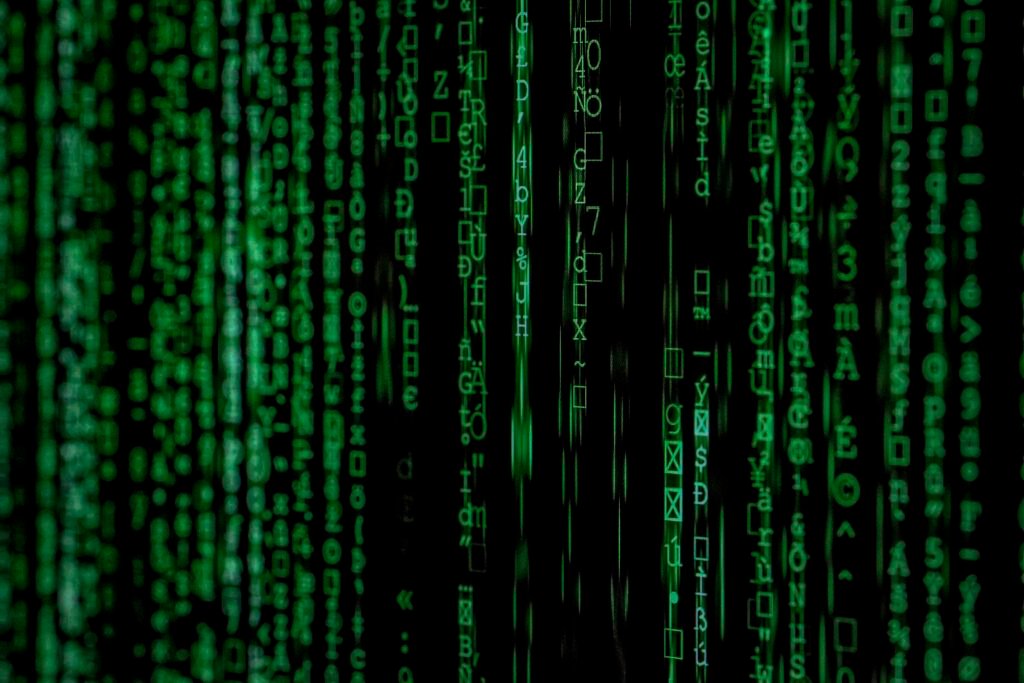AI has become an integral part of our lives, transforming the way we work, communicate, and even make decisions. With its exponential growth, however, comes the question of security. As AI continues to evolve and become more sophisticated, so do the risks associated with cyber threats. In this article, we will explore the current state of AI security, its vulnerabilities, and the measures being taken to ensure the protection of this powerful technology. Dive into the world of AI and discover just how secure it truly is from cyber threats.
Understanding AI Security
Artificial Intelligence (AI) refers to the development of computer systems that can perform tasks that would usually require human intelligence. These tasks include speech recognition, decision-making, problem-solving, and more. AI technology has the potential to revolutionize various industries, but it also introduces new security risks and vulnerabilities. Understanding AI security is essential to ensure the safe and reliable operation of these systems.
Definition of AI
AI encompasses a wide range of technologies and techniques that enable machines to mimic human intelligence. This can be achieved through various methods such as machine learning, natural language processing, computer vision, and expert systems. AI systems rely on vast amounts of data and complex algorithms to learn patterns, make predictions, and automate processes. However, the increasing complexity and interdependence of AI systems also raise security concerns.
Types of AI Systems
AI systems can be categorized into three main types: narrow AI, general AI, and superintelligent AI. Narrow AI is designed to perform specific tasks and is restricted to a particular domain, such as image recognition or voice assistants. General AI, on the other hand, refers to AI systems that possess human-level intelligence and can perform any intellectual task that a human being can do. Superintelligent AI surpasses human intelligence and has the ability to outperform humans in virtually all cognitive tasks.
Importance of AI Security
The importance of AI security cannot be overstated. As AI becomes more integrated into our daily lives and critical infrastructure, the potential consequences of security breaches and attacks on AI systems become more significant. AI systems are vulnerable to a wide range of threats, including data poisoning attacks, evasion or adversarial attacks, and model theft. These vulnerabilities can lead to compromised performance, manipulated outcomes, and unauthorized access to sensitive data.
Common AI Vulnerabilities
AI systems face several vulnerabilities that cybercriminals can exploit to compromise their integrity, confidentiality, and availability. By understanding these vulnerabilities, organizations and researchers can develop effective countermeasures to protect AI systems.
Data Poisoning Attacks
Data poisoning attacks involve manipulating training data to trick AI models into producing incorrect or biased results. By introducing malicious samples or modifying existing data, attackers can manipulate an AI model’s decision-making process. Data poisoning attacks can have severe implications, especially when deployed in critical applications such as self-driving cars or healthcare diagnostics.
Evasion or Adversarial Attacks
Evasion or adversarial attacks aim to deceive AI systems by introducing subtle but carefully crafted modifications to input data. These modifications are often imperceptible to humans but can cause AI models to misclassify or generate false outputs. Adversarial attacks exploit the vulnerabilities in AI algorithms and can be used to bypass security systems, fool facial recognition technology, or manipulate automated content moderation.
Model Theft and Intellectual Property (IP) Theft
AI models are valuable intellectual property, and their theft can have significant economic and security implications. Attackers can reverse-engineer or steal AI models through various means, compromising an organization’s competitive advantage or sensitive algorithms. Additionally, model theft enables attackers to train their own AI models using the stolen data, leading to unauthorized replication of proprietary technologies.

This image is property of images.unsplash.com.
AI-specific Cyber Threats
In addition to traditional cyber threats, AI introduces unique challenges and risks that require specialized security measures.
Attacks on Training Data
AI models heavily rely on high-quality training data to make accurate predictions or decisions. Attackers can target the training data by either injecting malicious data or manipulating its distribution. By poisoning or manipulating the training data, adversaries can compromise the integrity and effectiveness of AI models, leading to undesirable outcomes in real-world scenarios.
Attacks on Machine Learning Algorithms
Machine learning algorithms are the core components of AI systems, and they are susceptible to attacks that exploit their vulnerabilities. Adversaries can exploit weaknesses in algorithms, such as biased training data or optimization flaws, to manipulate the behavior of AI models. These attacks can result in biased decision-making, privacy breaches, or the exploitation of unintended system behaviors.
Attacks on AI Models
Attackers can directly target deployed AI models to compromise their functionality or generate malicious outputs. By exploiting vulnerabilities in AI models, adversaries can tamper with decision-making systems or introduce false information. For example, attackers could manipulate the predictions of an AI-powered fraud detection system to evade detection or deceive users.
Challenges in AI Security
Securing AI systems is not without its challenges. The unique characteristics of AI technology present several hurdles that need to be overcome to ensure robust security.
Insufficient Training Data
AI models require vast amounts of high-quality training data to learn patterns and make accurate predictions. However, acquiring and labeling sufficient data for training can be a challenging and expensive process. Insufficient or inadequate training data can lead to biased or unreliable AI models, which can be exploited by attackers.
Lack of Explainability
AI models, particularly those based on deep learning neural networks, often lack explainability. Unlike traditional software systems, AI models make decisions based on complex algorithms and patterns that are difficult for humans to interpret. This lack of explainability makes it challenging to understand the reasoning behind AI model outputs and identify potential security vulnerabilities.
Rapidly Evolving Cyber Attacks
As AI technology evolves, cyber attackers are also becoming more sophisticated in their tactics. Adversaries can adapt their strategies to exploit new vulnerabilities or bypass traditional security measures. The rapidly evolving nature of cyber attacks requires continuous research and development of AI security techniques to stay one step ahead of potential threats.

This image is property of images.unsplash.com.
Protecting AI Systems
To protect AI systems from cyber threats, organizations need to implement robust security measures throughout the AI lifecycle, from data collection to deployment and beyond.
Robust Data Collection and Preprocessing
Ensuring the quality and integrity of training data is crucial for building secure and reliable AI models. Organizations should implement rigorous data collection and preprocessing techniques to detect and mitigate potential biases, anomalies, or malicious data. Additionally, data privacy and protection measures should be in place to safeguard sensitive information.
Implementing Strict Access Controls
Controlling access to AI systems and their associated data is essential to prevent unauthorized tampering or exploitation. Implementing strict access controls, authentication mechanisms, and encryption protocols can help protect AI models and prevent unauthorized access. Regular audits and monitoring of access logs can help identify potential security breaches and mitigate risks proactively.
Continuous Monitoring and Reporting
Continuous monitoring and reporting of AI systems are vital to detect anomalies, identify potential security incidents, and respond promptly to threats. Monitoring AI models for suspicious activities or unexpected behaviors can enable organizations to identify and mitigate attacks in real-time. Additionally, implementing reporting mechanisms can facilitate the sharing of threat intelligence and enhance collaboration among security professionals.
Machine Learning Techniques for AI Security
Machine learning techniques can play a crucial role in enhancing the security of AI systems. These techniques focus on developing AI models that are resilient to attacks and capable of detecting and mitigating threats.
Adversarial Training
Adversarial training involves training AI models on both legitimate data and adversarial examples designed to trick the model. This technique helps AI models become more robust to adversarial attacks by exposing them to a wide range of potential threats during the training stage. Adversarial training can improve a model’s ability to recognize and respond to previously unseen attacks.
Randomized Smoothing
Randomized smoothing is a technique that adds noise to input data to make AI models more resilient to adversarial attacks. By applying random perturbations, the boundaries between different classes become less defined, making it harder for attackers to exploit vulnerabilities in AI models. Randomized smoothing helps improve the accuracy and robustness of AI models in the face of adversarial inputs.
Privacy-Preserving Machine Learning
Privacy-preserving machine learning techniques aim to protect sensitive data while still allowing AI models to learn from it. By using cryptographic methods, differential privacy, or federated learning, organizations can train AI models on distributed datasets without compromising the privacy of individual data contributors. These techniques ensure that AI systems can maintain privacy and security while leveraging the benefits of large-scale data.

This image is property of images.unsplash.com.
The Role of Ethical AI in Security
Ethical considerations play a vital role in ensuring the security and trustworthiness of AI systems. Ethical AI principles highlight the importance of fairness, transparency, and accountability in the development and deployment of AI technologies.
Considering Bias and Fairness
Bias in AI systems can have detrimental effects on individuals or groups, perpetuating inequality and discrimination. Organizations must address bias during the design and development stages of AI systems to ensure fairness. Rigorous testing and validation methods should be employed to identify and mitigate biases that may arise due to imbalanced training data or algorithmic biases.
Transparency and Accountability
Transparent AI systems are essential for users, regulators, and stakeholders to understand how decisions are made and assess the trustworthiness of AI models. Organizations should strive for transparency by documenting the development process, providing clear explanations of model behavior, and disclosing any limitations or potential biases. Additionally, establishing accountability frameworks and mechanisms for remediation is crucial to ensure responsible AI use.
Human Oversight in Decision-Making
While AI systems can automate many decision-making processes, human oversight remains indispensable. Humans can provide critical judgment, identify potential biases or errors, and intervene when necessary. Incorporating human review and decision-making checkpoints into AI systems can help prevent malicious use, reduce errors, and ensure responsible and ethical AI deployment.
Collaborations and Standards for AI Security
Addressing AI security requires collaboration among various stakeholders, including government agencies, private organizations, academia, and researchers. Building partnerships and sharing knowledge and best practices can significantly enhance the collective defense against evolving AI threats.
Public-Private Partnerships
Public-private partnerships can foster collaboration and information sharing between government agencies and private organizations. These partnerships can facilitate joint research, threat intelligence sharing, and policy development to address AI security challenges effectively. By leveraging the strengths of both sectors, public-private partnerships can enhance the overall security posture and resilience of AI systems.
Development of AI Security Frameworks
The development of AI security frameworks and industry standards can provide organizations with guidelines to ensure the secure design, development, and deployment of AI systems. These frameworks can address specific threats and vulnerabilities, offering practical recommendations for implementing robust security measures. By following these frameworks, organizations can proactively mitigate risks and build trustworthy AI systems.
Sharing Threat Intelligence
Sharing threat intelligence plays a vital role in staying ahead of AI-specific cyber threats. Collaboration among organizations, researchers, and industry experts can help identify emerging threats, exchange best practices, and develop effective countermeasures. Establishing platforms and initiatives for sharing threat intelligence can facilitate the collective defense against AI threats and enable more informed decision-making in implementing security measures.

Regulatory Measures for AI Security
Regulations and regulatory frameworks are necessary to ensure the responsible development and deployment of AI systems. They can establish baseline security requirements, accountability mechanisms, and penalties for non-compliance.
Data Protection and Privacy Regulations
Data protection and privacy regulations play a critical role in safeguarding individuals’ personal information and ensuring the responsible use of AI systems. Organizations must comply with applicable data protection laws and regulations, including obtaining informed consent, implementing adequate security measures, and providing individuals with control over their data.
Responsible AI Governance
Responsible AI governance refers to the establishment of policies, guidelines, and practices that ensure AI technologies are developed and used ethically and responsibly. Regulatory frameworks can mandate the adoption of responsible AI governance principles, including transparency, fairness, accountability, and explainability. Responsible AI governance frameworks can help organizations align their AI practices with ethical standards and regulatory requirements.
Penalties and Consequences for Non-Compliance
To enforce AI security measures, regulatory frameworks may impose penalties and consequences for non-compliance. These penalties can include fines, legal liabilities, or revocation of licenses or certifications. By establishing clear consequences for non-compliance, regulatory measures incentivize organizations to prioritize AI security and ensure the protection of AI systems and the individuals who interact with them.
The Future of AI Security
As AI technology continues to advance, so too will the threats and countermeasures in AI security. Several trends and developments hold promise for the future of AI security.
Advancements in AI Security Research
Ongoing research and innovations in AI security are necessary to keep up with evolving threats. Researchers and experts are continuously exploring new techniques and technologies to strengthen the security and resilience of AI systems. Advancements in anomaly detection, explainability, and adversarial robustness will play a critical role in ensuring future AI systems’ safety and trustworthiness.
Emerging Technologies for AI Defense
Emerging technologies, such as secure multi-party computation, homomorphic encryption, and machine learning on encrypted data, hold significant potential for enhancing AI security. These technologies aim to protect sensitive data, secure AI models, and enable secure collaborations while preserving privacy. Applying these emerging technologies to AI security will enable organizations to strike a balance between data accessibility and protection.
Integration of AI into Cybersecurity
As AI technology matures, it will also be increasingly integrated into cybersecurity practices. AI-powered security solutions can leverage machine learning algorithms to detect and mitigate threats in real-time. AI can analyze vast amounts of security data, identify patterns, and automate threat response, augmenting human security teams’ capabilities. The integration of AI into cybersecurity will lead to more proactive, efficient, and effective defense against evolving cyber threats.
In conclusion, understanding AI security is crucial to protect AI systems from cyber threats. AI brings immense potential for innovation and transformation across various industries, but it also introduces new vulnerabilities and risks. By addressing common vulnerabilities, AI-specific threats, and challenges in AI security, organizations can implement robust security measures such as data collection, access controls, and continuous monitoring. Machine learning techniques can further enhance AI security, while ethical considerations, collaborations, and regulatory measures ensure responsible and trustworthy AI development and deployment. Looking ahead, the future of AI security will rely on advancements in research, emerging technologies, and the integration of AI into cybersecurity practices. Ensuring the security of AI systems is a shared responsibility that requires ongoing collaboration and diligence from all stakeholders involved.
